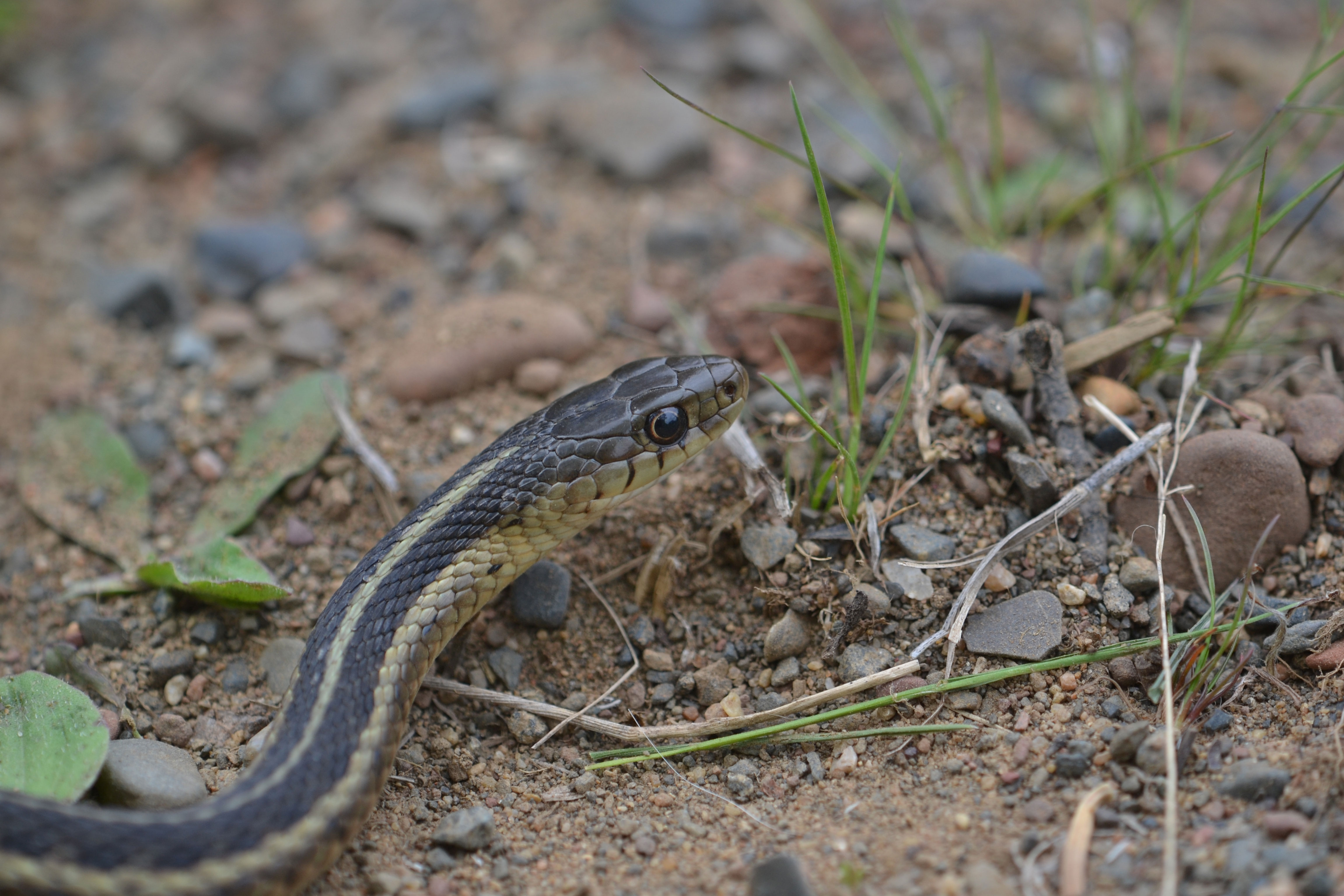Amphibian & Reptiles Checklist
Checklist of the Amphibians and Reptiles of Thunder Bay District, Ontario
At least 25 species of amphibians and reptiles have been found within the Thunder Bay District of Ontario. Of these, only 17 species can be considered native species (13 amphibians, 4 reptiles). At least eight species of escaped pet and introduced exotic or ‘accidental’ species have occasionally been found in the district but do not persist. The checklist was compiled by Dr. Stephen Hecnar (Department of Biology, Lakehead University) by using his own records and those of his colleagues. Most of these records are also documented in the published literature or archived in the Ontario Reptile and Amphibian Atlas (ORAA).
Nomenclature and taxonomy follow the Committee on Standard English and Scientific Names 8th edition of the official names list of the joint herpetological societies of North America (Crother et al. 2017). The Thunder Bay District checklist will be updated on this website if new species are verified or to reflect taxonomic changes made by the committee.
Common or Rare Species Documentation
The occurrence or distribution of amphibians and reptiles in Northern Ontario has not been documented as well as records of birds, fish, and mammals. Sightings of all amphibian and reptile species can be recorded on iNaturalist (https://inaturalist.ca). Records can be reported online or by using a cellular phone application. Please also report any rare species sightings to S. Hecnar at Lakehead University (shecnar@lakeheadu.ca).
Status, Rarity, and Activity Peak* Codes
- C – Common, abundant and/or widespread
- LC – Locally Common, abundant at some sites
- R – Rare, low abundance
- A – Accidental –
- I – Introduced
- ES – Early Spring
- LS – Late Spring
- S – Summer
- F – Fall
- W – Winter
* “activity peak” for the frogs and toads refers to calling activity
Reference
Crother et al. 2017. Scientific and Standard English Names of Amphibians and Reptiles of North America North of Mexico, with Comments Regarding Confidence in Our Understanding, 8th edition, SSAR Herpetological Circular No. 43. Shoreview, MN: Society for the Study of Amphibians and Reptiles.
Checklist of the Amphibians and Reptiles of Thunder Bay District, Ontario
| Common Name | Scientific Name | Rarity | Activity |
| ANURANS | Frogs and Toads | ||
| Boreal Chorus Frog | Pseudacris maculata | C | ES-LS |
| Spring Peeper | Pseudacris crucifer | C | LS |
| Gray Treefrog | Hyla versicolor | LC | LS-S |
| Cope’s Gray Treefrog | Hyla chrysoscelis | A | LS-S |
| Wood Frog | Lithobates sylvaticus | C | ES |
| Northern Leopard Frog | Lithobates pipiens | LC | LS |
| Mink Frog | Lithobates septentrionalis | C | S |
| Green Frog | Lithobates clamitans | C | S |
| American Toad | Anaxyrus americanus | C | LS-S |
| 1Tropical Treefrogs | A | ||
| CAUDATANS | Salamanders | ||
| Mudpuppy | Necturus maculosus | R | ES,F,W |
| Eastern Newt | Notophthalmus viridescens | LC | LS,S,F |
| Blue-spotted Salamander | Ambystoma laterale | C | ES-LS |
| Spotted Salamander | Ambystoma maculatum | R | LS |
| Eastern Red-backed Salamander | Plethodon cinereus | R | LS,S,F |
| TESTUDINES | Turtles | ||
| Painted Turtle | Chrysemys picta | C | LS-S |
| Snapping Turtle | Chelydra serpentina | R | S |
| 2Red-eared Slider | Trachemys scripta | I | LS-S |
| SQUAMATES | Snakes & Lizards | ||
| Common Gartersnake | Thamnophis sirtalis | C | LS,S,F |
| Red-bellied Snake | Storeria occipitomaculata | R | LS,S,F |
| Gray Ratsnake | Pantherophis spiloides | I | LS,S,F |
| 3Exotic snakes | I | ||
| 4Tropical Lizards | A | LS,F |
1Several species of tropical frogs occasionally occur in the district and usually are found in imported plants and vegetables. These species will not survive outdoors in boreal winters.
2Occasionally individuals of this common pet species that have escaped or been released are reported. This southern species will not survive outdoors in boreal winters.
3Several species of exotic snakes kept by local pet collectors have escaped. Most are southern species that will not survive boreal winters.
4Occasionally tropical lizards have arrived in the district as ‘stowaways’ in imported plants or produce. These species will not survive outdoors in boreal winters.
This list is current as of August 2019.
Links
- Ontario Reptile and Amphibian Atlas
- Crother et al.
- Stephen Hecnar email: shecnar@lakeheadu.ca

